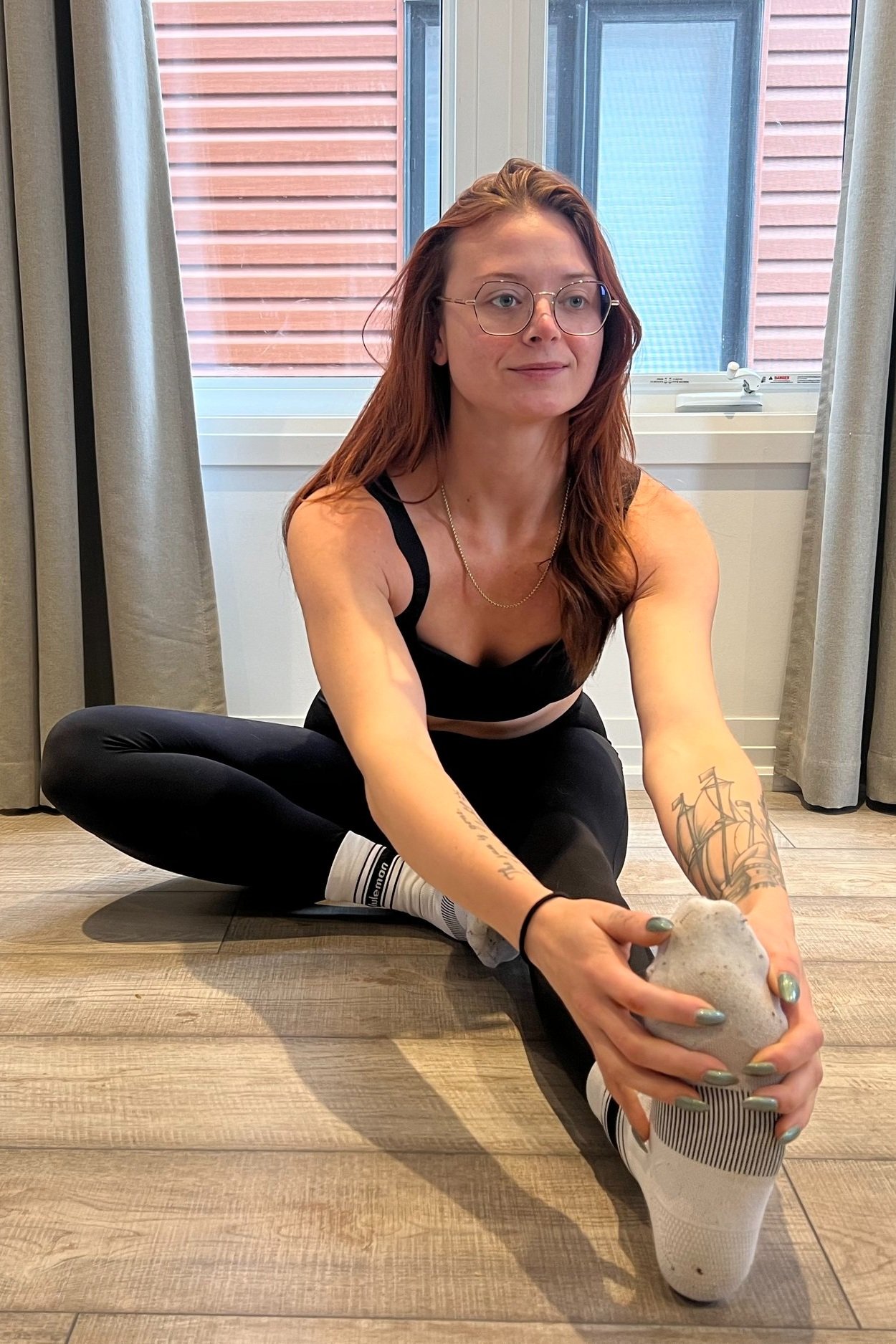How to Loosen Tight Hamstrings: 2 Simple Stretches for Flexibility
Our hamstrings are a group of three muscles that run along the back of your thighs. They are called the biceps femoris, semitendinosus, and semimembranosus. These muscles are essential for various lower body movements including walking, running, jumping, and bending or “hinging” at the hips. Despite their important role, hamstrings are a common area that often becomes tight, leading to discomfort and limited mobility. In this blog, we will explore what hamstrings are and why they become tight. The Biceps Femoris consists of two parts, the long head, and the short head. These muscles are located on the outer side of your thighs. Semitendinosus and Semimembranosus: These muscles are situated on the inner side of your thighs.
Why Do Hamstrings Become Tight?
Sedentary Lifestyle: Sitting for long hours at a desk or on the couch can cause your hamstrings to remain in a shortened position. Over time, this can lead to tightness.
Lack of Stretching: Not incorporating regular stretching into your routine can cause your hamstrings to lose flexibility.
Muscle Imbalance: When the quadriceps (the muscles on the front of your thigh) are significantly stronger than your hamstrings, it can lead to muscle imbalance and hamstring tightness.
Overexertion: Excessive physical activity, especially without proper warm-up and cool-down, can strain the hamstrings and lead to tightness.
Aging: As we age, our muscles tend to lose flexibility, and this can affect the hamstrings as well.
Injury: Previous injuries to the hamstrings, if not properly rehabilitated, can lead to scar tissue and increased tightness.
Tight hamstrings can result in a range of issues, including lower back pain, hip pain, and limited range of motion in the hips and legs. They can also increase the risk of hamstring strains and other injuries. Therefore, it's crucial to address tight hamstrings through a combination of stretching and strengthening exercises.
Stretching for Hamstring Relief:
Regular stretching can help improve the flexibility of your hamstrings. Incorporate the stretches such as the standing and seated hamstring stretch below into your routine.
Seated Hamstring Stretch:
Sit on the floor with your legs extended straight in front of you.
Keep your back straight and shoulders relaxed.
Bend one knee and place the sole of your foot against the inner thigh of your extended leg.
Reach forward toward your toes with both hands while keeping your back straight.
Hold the stretch for 15-30 seconds, breathing deeply.
Switch to the other leg and repeat.
Standing Hamstring Stretch:
Stand with your feet hip-width apart.
Take a step forward with one foot.
Keep your toes pointing straight ahead.
Hinge at your hips, leaning forward, and reach your hands down your front leg or towards your toes.
Keep your back straight as you feel a stretch in the hamstrings of the extended leg.
Hold the stretch for 15-30 seconds, breathing deeply.
Switch to the other leg and repeat.
*as you may be able to tell…. I could use some hamstring stretching too ;)
Remember to perform these stretches gently, and don't force your body into uncomfortable positions. Over time, as your flexibility improves, you can gradually increase the intensity and duration of the stretches. Stretching should be a regular part of your routine to maintain hamstring flexibility and prevent tightness.
In the end understanding what our hamstrings are and why they become tight is the first step towards addressing this common issue. Whether it's due to a sedentary lifestyle, muscle imbalance, or injury, taking steps to improve hamstring flexibility is essential for maintaining overall lower body health and preventing discomfort and injury. Stretching, combined with proper warm-up and cool-down techniques, can go a long way in keeping your hamstrings ready for action!
Happy Exercising :)
Robyn



